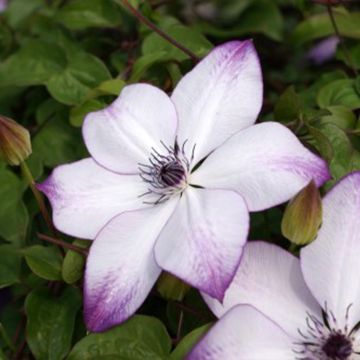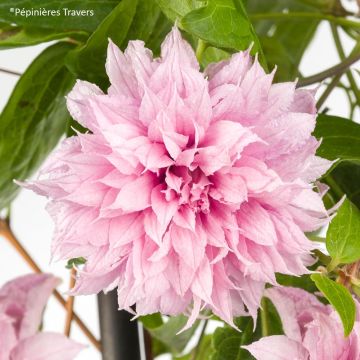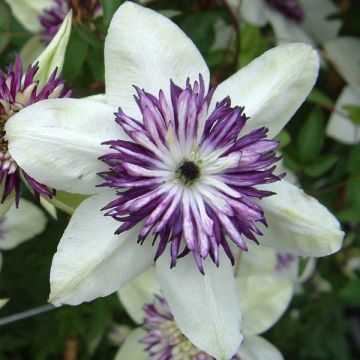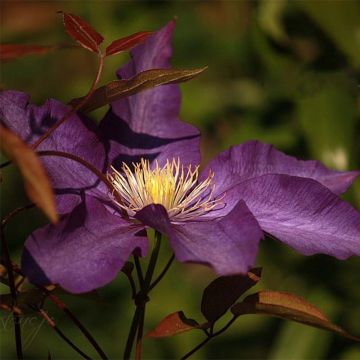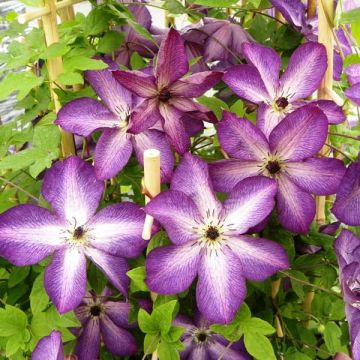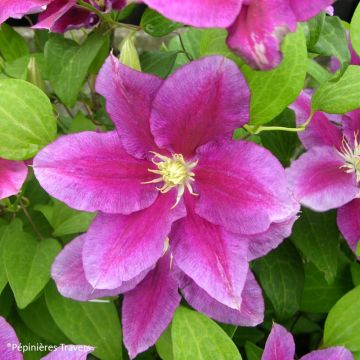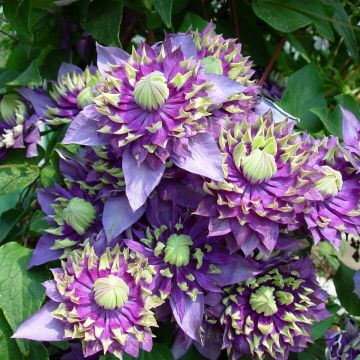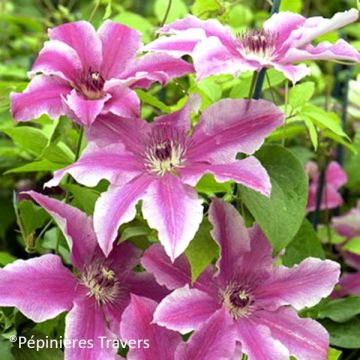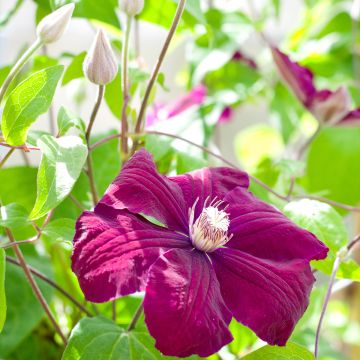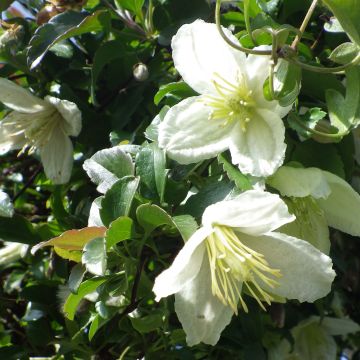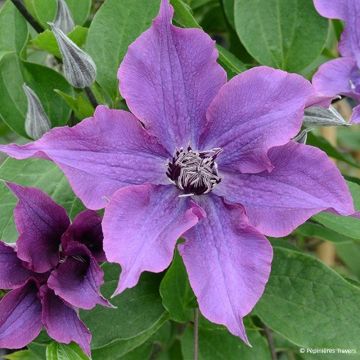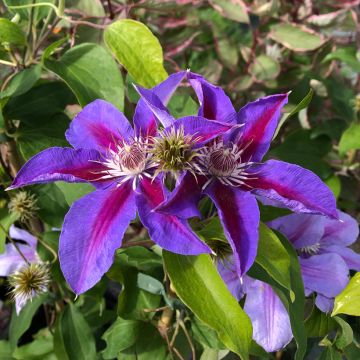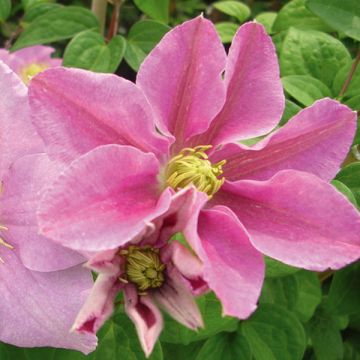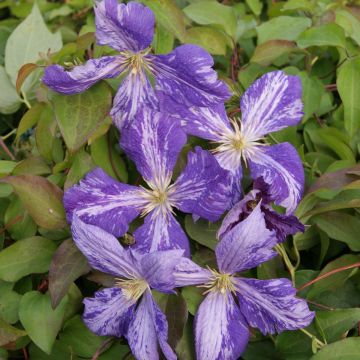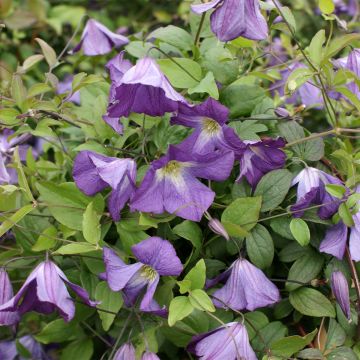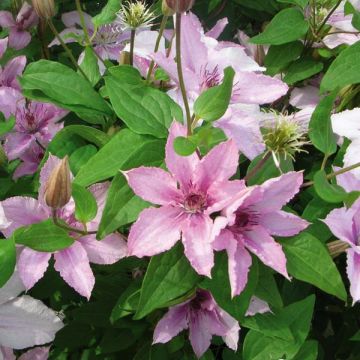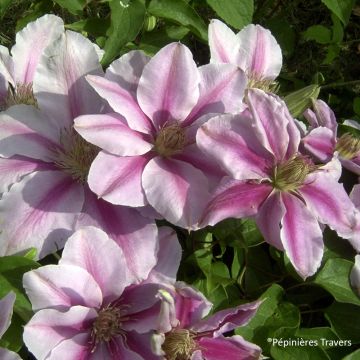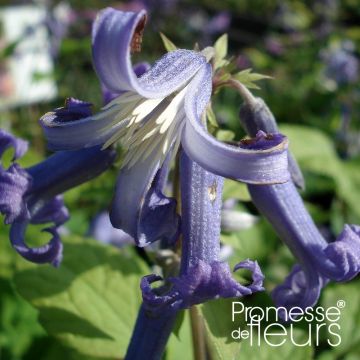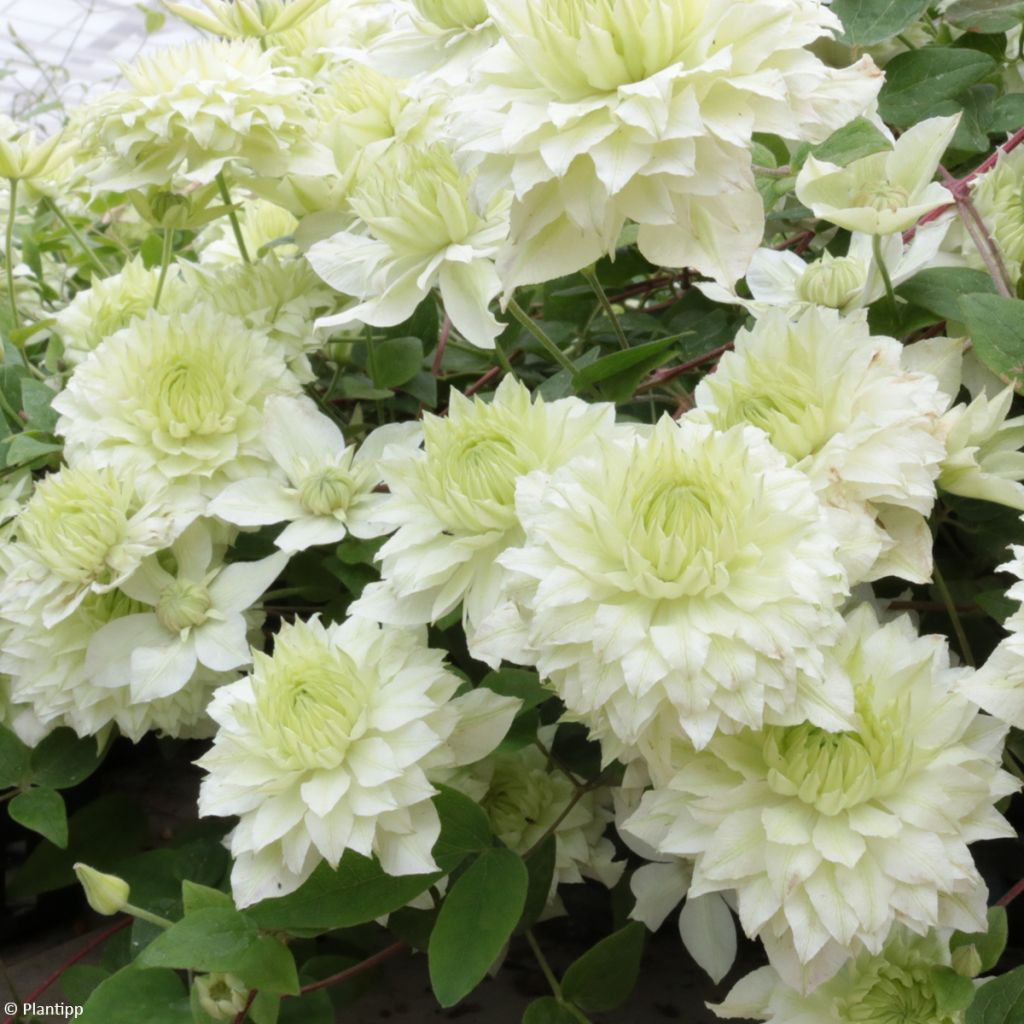

Clématite - Clematis Manju
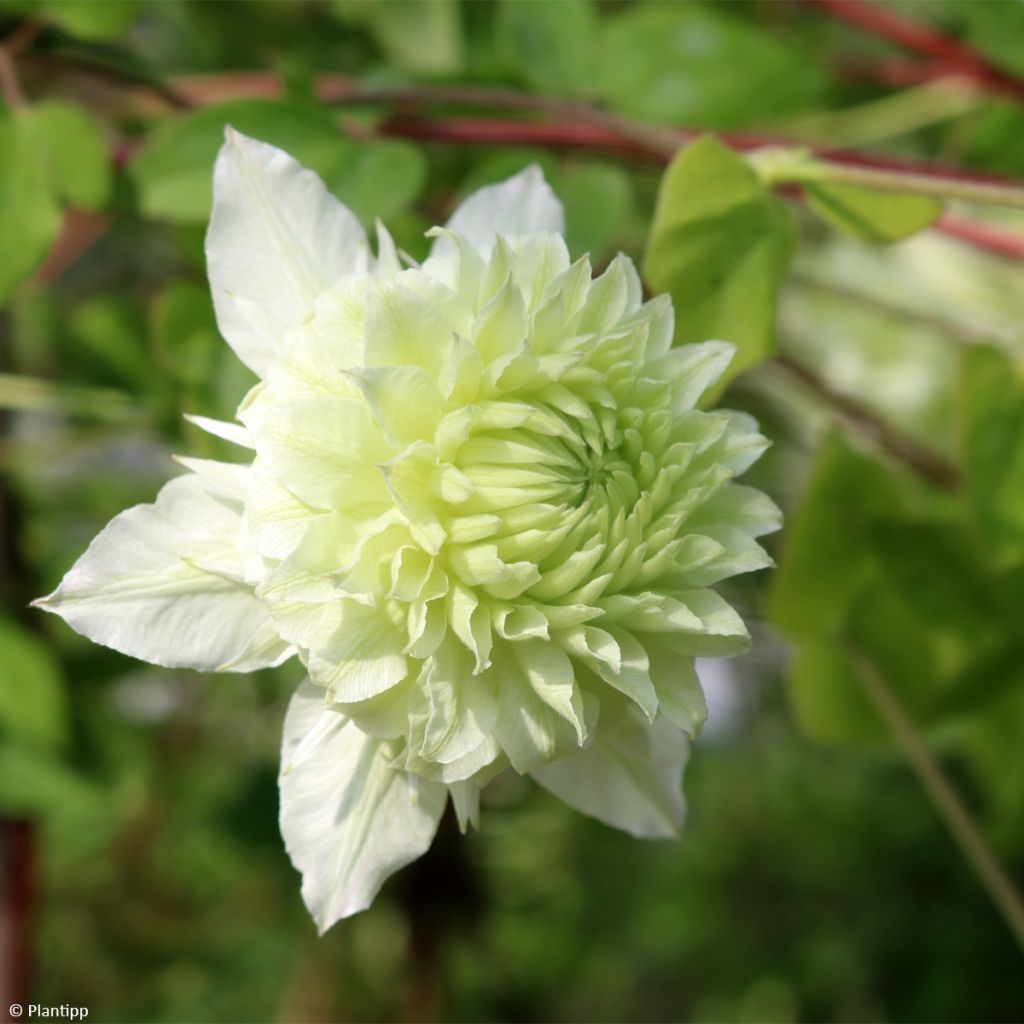

Clématite - Clematis Manju
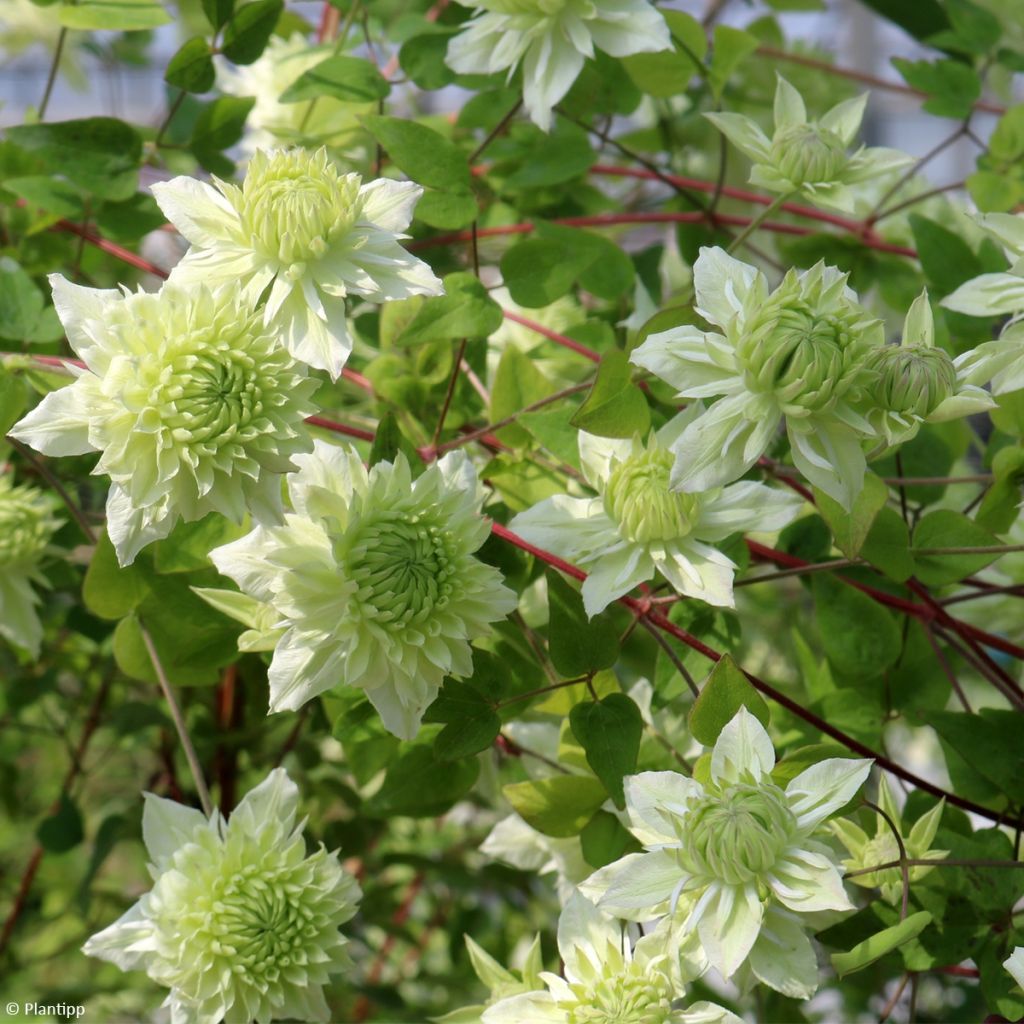

Clématite - Clematis Manju
Clematis Manju
Clematis florida x integrifolia Manju
Clematis florida x integrifolia
Why not try an alternative variety in stock?
View all →This plant carries a 6 months recovery warranty
More information
We guarantee the quality of our plants for a full growing cycle, and will replace at our expense any plant that fails to recover under normal climatic and planting conditions.
From €5.90 for pickup delivery and €6.90 for home delivery
Express home delivery from €8.90.
Does this plant fit my garden?
Set up your Plantfit profile →
Description
Clematis Manju, recently obtained in Japan, is a wonderful climbing plant that combines very double flowers that resemble the shape of clematis Taiga or Kokonoe, but surpasses them in floribundance. Its green and cream-white pompom flowers open in 3 stages, starting from a large central bud that opens into increasingly double star-shaped flowers, with curved petals ending in a point. This surprising little climber blooms tirelessly and generously from late spring to autumn. With a modest stature but rapid growth, it is well suited for container cultivation.
The Clematis genus belongs to the ranunculaceae family. 'Manju' is a very recent hybrid cultivar from Japan, whose flower truly embodies the refined spirit that inhabits each of the Japanese variety creations. 'Manju' has the genes of Clematis florida, a species native to Japan (despite its name!) and C. integrifolia, a robust and floriferous herbaceous clematis from Eurasia. This variety floods its vegetation with superb variegated cream-white and green flowers between June and the end of September or early October. It belongs to clematis group that flower on new growth.
Clematis Manju is a woody and climbing perennial plant with short stems that will not exceed 3 m high, with a spread of 1 m². The deciduous leaves are a bright green sometimes tinged with purple and carried on reddish stems. Some are composed of 3 oval to lanceolate leaflets measuring 3 to 7 cm (1 to 3in) long and 1.5 to 5 cm (1 to 2in) wide, some are simple and oval measuring 7 to 10 cm (3 to 4in) long. The very double flowers are composed of countless elliptical and recurved tepals, tapering at the tips, and are 4 to 6 cm wide. The centre is occupied by a large light green bud, surrounded by smaller petals, atop a collar of larger petals. The flower is initially green and takes on a creamy white colour when mature. This clematis clings to the support or host plant through twining stems with petioles transformed into tendrils. This variety has good health and good hardiness (-15°C). Its leaves dry up and fall off in winter.
Plant clematis alongside your climbing roses to extend the flowering of your walls and pergolas until the end of summer. It is a genus rich in diversity, with varieties available in all colours, shapes, and sizes. Take advantage of their easy cultivation to give your garden a romantic and bohemian touch. The surprising 'Manju' variety will be perfect trained against a wall and very pretty in a shrub with pink flowers. Thanks to its modest size, it will easily fit in a small garden and thrive in a pot on a balcony or next to an entrance door, to welcome visitors with its unusual flowers.
Report an error about the product description
Clematis Manju in pictures
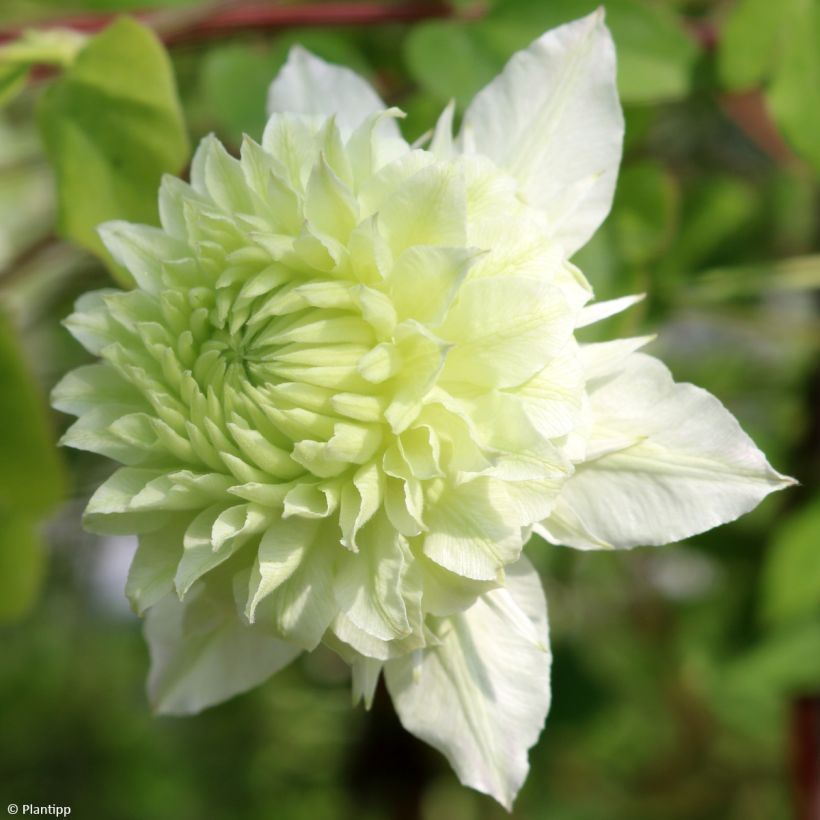

Plant habit
Flowering
Foliage
Safety measures
Botanical data
Clematis
florida x integrifolia
Manju
Ranunculaceae
Clematis florida x integrifolia
Cultivar or hybrid
ingestion
Cette plante est toxique si elle est ingérée volontairement ou involontairement.
Ne la plantez pas là où de jeunes enfants peuvent évoluer, et lavez-vous les mains après l'avoir manipulée.
Pensez à conserver l'étiquette de la plante, à la photographier ou à noter son nom, afin de faciliter le travail des professionnels de santé.
Davantage d'informations sur https://plantes-risque.info
Other Clematis Florida
Planting and care
Choose a clear, sunny exposure or partial shade. In sunny exposure, shade the base of your plant with a ground cover or a perennial geranium. Clematis plants like to have their feet in the shade. Plant your clematis by covering the root ball with 3 cm (1in) of soil, in a well-worked, 20 cm (8in) area of soil, lightened with good compost. Water abundantly and regularly in the first few weeks. Clematis plants cling by themselves thanks to their tendrils. To promote their growth, provide them with trellis support or help them dress the trunk of a tree by placing a mesh. Clematis plants also like to grow freely on neighbouring plants. You can prune them to a height of 50 cm (20in). We advise you not to water too much, as stagnant water can cause the development of a deadly fungus at the base.
Planting period
Intended location
Care
-
, onOrder confirmed
Reply from on Promesse de fleurs
Clematis
Haven't found what you were looking for?
Hardiness is the lowest winter temperature a plant can endure without suffering serious damage or even dying. However, hardiness is affected by location (a sheltered area, such as a patio), protection (winter cover) and soil type (hardiness is improved by well-drained soil).

Photo Sharing Terms & Conditions
In order to encourage gardeners to interact and share their experiences, Promesse de fleurs offers various media enabling content to be uploaded onto its Site - in particular via the ‘Photo sharing’ module.
The User agrees to refrain from:
- Posting any content that is illegal, prejudicial, insulting, racist, inciteful to hatred, revisionist, contrary to public decency, that infringes on privacy or on the privacy rights of third parties, in particular the publicity rights of persons and goods, intellectual property rights, or the right to privacy.
- Submitting content on behalf of a third party;
- Impersonate the identity of a third party and/or publish any personal information about a third party;
In general, the User undertakes to refrain from any unethical behaviour.
All Content (in particular text, comments, files, images, photos, videos, creative works, etc.), which may be subject to property or intellectual property rights, image or other private rights, shall remain the property of the User, subject to the limited rights granted by the terms of the licence granted by Promesse de fleurs as stated below. Users are at liberty to publish or not to publish such Content on the Site, notably via the ‘Photo Sharing’ facility, and accept that this Content shall be made public and freely accessible, notably on the Internet.
Users further acknowledge, undertake to have ,and guarantee that they hold all necessary rights and permissions to publish such material on the Site, in particular with regard to the legislation in force pertaining to any privacy, property, intellectual property, image, or contractual rights, or rights of any other nature. By publishing such Content on the Site, Users acknowledge accepting full liability as publishers of the Content within the meaning of the law, and grant Promesse de fleurs, free of charge, an inclusive, worldwide licence for the said Content for the entire duration of its publication, including all reproduction, representation, up/downloading, displaying, performing, transmission, and storage rights.
Users also grant permission for their name to be linked to the Content and accept that this link may not always be made available.
By engaging in posting material, Users consent to their Content becoming automatically accessible on the Internet, in particular on other sites and/or blogs and/or web pages of the Promesse de fleurs site, including in particular social pages and the Promesse de fleurs catalogue.
Users may secure the removal of entrusted content free of charge by issuing a simple request via our contact form.
The flowering period indicated on our website applies to countries and regions located in USDA zone 8 (France, the United Kingdom, Ireland, the Netherlands, etc.)
It will vary according to where you live:
- In zones 9 to 10 (Italy, Spain, Greece, etc.), flowering will occur about 2 to 4 weeks earlier.
- In zones 6 to 7 (Germany, Poland, Slovenia, and lower mountainous regions), flowering will be delayed by 2 to 3 weeks.
- In zone 5 (Central Europe, Scandinavia), blooming will be delayed by 3 to 5 weeks.
In temperate climates, pruning of spring-flowering shrubs (forsythia, spireas, etc.) should be done just after flowering.
Pruning of summer-flowering shrubs (Indian Lilac, Perovskia, etc.) can be done in winter or spring.
In cold regions as well as with frost-sensitive plants, avoid pruning too early when severe frosts may still occur.
The planting period indicated on our website applies to countries and regions located in USDA zone 8 (France, United Kingdom, Ireland, Netherlands).
It will vary according to where you live:
- In Mediterranean zones (Marseille, Madrid, Milan, etc.), autumn and winter are the best planting periods.
- In continental zones (Strasbourg, Munich, Vienna, etc.), delay planting by 2 to 3 weeks in spring and bring it forward by 2 to 4 weeks in autumn.
- In mountainous regions (the Alps, Pyrenees, Carpathians, etc.), it is best to plant in late spring (May-June) or late summer (August-September).
The harvesting period indicated on our website applies to countries and regions in USDA zone 8 (France, England, Ireland, the Netherlands).
In colder areas (Scandinavia, Poland, Austria...) fruit and vegetable harvests are likely to be delayed by 3-4 weeks.
In warmer areas (Italy, Spain, Greece, etc.), harvesting will probably take place earlier, depending on weather conditions.
The sowing periods indicated on our website apply to countries and regions within USDA Zone 8 (France, UK, Ireland, Netherlands).
In colder areas (Scandinavia, Poland, Austria...), delay any outdoor sowing by 3-4 weeks, or sow under glass.
In warmer climes (Italy, Spain, Greece, etc.), bring outdoor sowing forward by a few weeks.

































